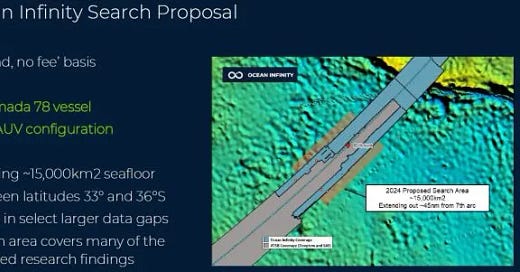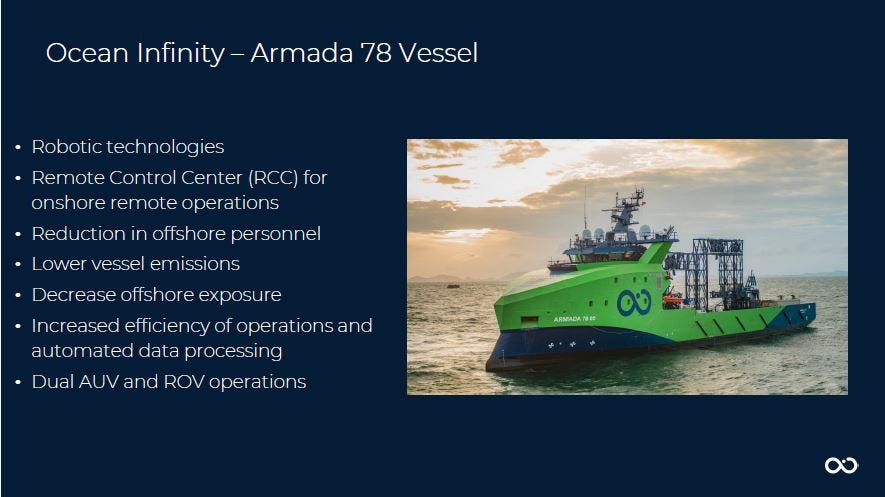Malaysian Cabinet approves agreement for Ocean Infinity’s search for MH370
The Malaysian Cabinet today (Wednesday) gave its final approval to the terms and conditions of an agreement with Ocean Infinity for its search for the wreckage of MH370.
Malaysia’s transport minister, Anthony Loke, said the transport ministry would represent the Malaysian government in signing the agreement.
He said this paved the way for Ocean Infinity to proceed with seabed search operations to locate the wreckage of flight MH370 “in a new area estimated at 15,000 square kilometres in the southern Indian Ocean”.
Loke said the search would be based on the ‘no find, no fee’ principle.
“Under this principle, the Malaysian government will not be required to pay Ocean Infinity unless the wreckage of the aircraft is discovered, with a success fee amounted to USD70 million,” he added.
“The government is committed to continuing the search operation and providing closure for the families of MH370 passengers.”
MH370 went missing on March 8, 2014, with 239 passengers and crew on board. It was en route from Kuala Lumpur to Beijing.
While some debris has been found that the Malaysian authorities say is from the missing plane, neither MH370 nor its voice and data recorders have been located.
Ocean Infinity has already deployed its new robotic vessel Armada 78 06 in the southern Indian Ocean. The ship, which was deployed in the search area nearly a month ago, is currently to the east of what is described as the 7th Arc.
The original decision to search for MH370 in the southern Indian Ocean was based on calculations by the British company Inmarsat that were based on satellite pings – or handshakes – from MH370. Inmarsat said MH370 was most likely to be found along what became known as the 7th Arc.
It is now more than three months since the Malaysian Cabinet agreed in principle to accept Ocean Infinity’s proposal and there has been frustration among next of kin and independent investigators about the time being taken for the contract to be signed.
On December 20 last year Loke announced that, on December 13, the Cabinet had agreed in principle to accept the proposal.
On February 25, he welcomed Ocean Infinity’s proactive deployment in the southern Indian Ocean. He referred to the deployment as “positive news” for the next of kin, who had been awaiting the resumption of the search. He said at that time that the contract with Ocean Infinity was still being finalised.
Ocean Infinity has said that it would be focusing in its new search on an area between latitudes 33°S and 36°S, wider from the 7th Arc than was previously searched.
The proposal handed over to Anthony Loke during last year’s 10th anniversary remembrance event in Kuala Lumpur.
In its search in 2018, Ocean Infinity used a leased Norwegian vessel, Seabed Constructor, and its own Autonomous Underwater Vehicles (AUVs), capable of operating in depths up to 6,000 metres.
The three AUVs used so far in the new search are able to spend up to four days submerged.
Loke said on the 11-year anniversary of the disappearance of MH370 that the United States National Transportation Safety Board and the Australian Transport Safety Bureau had each appointed an accredited representative to provide technical assistance for Ocean Infinity’s mission.
“The cooperation of all parties is invaluable in this ongoing effort, which remains one of the most complex and challenging search operations in aviation history,” he added.
There are four main hotspots that have been identified as possible locations for MH370:
An area suggested by independent investigators Victor Iannello and Bobby Ulich that had already been partly searched, but which Iannello and Ulich said needed scouring again, with a widened scope. This area, which is about 2,000 km west of Perth, Australia, is centred on 34.2°S 93.8°E.
Broken Ridge, at 32.5°S 96.5°E, which American amateur investigator Blaine Gibson, who has found, retrieved, and/or handed in 22 pieces of debris, and oceanographer Charitha Pattiaratchi from the University of Western Australia say is the most important ‘hotspot’. Gibson and Pattiaratchi argue that any new search should not be focused too narrowly along the 7th Arc and should include the area from 28.3°S to 33.2°S.
An area suggested by Jean-Luc Marchand from Belgium and retired Air France pilot Patrick Blelly that has not previously been searched is around a 35.7°S 93°E centrepoint.
A location suggested by independent investigator Richard Godfrey centred on 29.128°S 99.934°E. Less than half of the area Godfrey suggests has been previously scoured. Godfrey has conducted analyses using the Global Detection and Tracking of Any Aircraft Anywhere (GDTAAA) software based on Weak Signal Propagation Reporter (WSPR) data. He has monitored radio signals sent out by radio amateurs around the world. Some investigators find his analysis compelling, but others are more sceptical.
Blelly is providing tracking information for Armada 78 06 on the MH370-CAPTION website. He explains that the potential search area as presented in March 2024 during the 10th anniversary remembrance event in Kuala Lumpur is shown by the white lines and this includes the zone centred on 35.7°S 93°E.
The map pictured below, which shows the track of Armada 78 06, is interactive on the MH370-CAPTION website and the vessel’s position is updated at 30 minutes past the hour UTC (90 minutes behind real time).
Blelly explains that the orange line on the map illustrates the zone scanned during Phase 2 marine surveys conducted by the governments of Australia, Malaysia, and China between September 2014 and January 2017 and the red line illustrates Ocean Infinity’s search in 2018.
In 2018, Ocean Infinity spent more than three months searching for MH370 in the southern Indian Ocean. The company scoured, and collected data from, more than 112,000 square kilometres of ocean floor, which is far in excess of the initial 25,000-square-kilometre target and almost the same area as was examined in the previous search over a period of two and a half years.
The previous Australian-led underwater search was suspended on January 17, 2017, after an area spanning 120,000 square kilometres was scoured.
This article is also available on my Changing Times website.
All my articles are freely accessible, but I do need the support of my readers. If you like my articles, please do share them. If you wish to support my work financially with a donation please click this PayPal link.
If you would like to take out a paid subscription to my Changing Times website, there are PayPal subscription buttons on the website.
Thanks to all those who already support me and thanks in advance to those who will be supporting me in the future.





